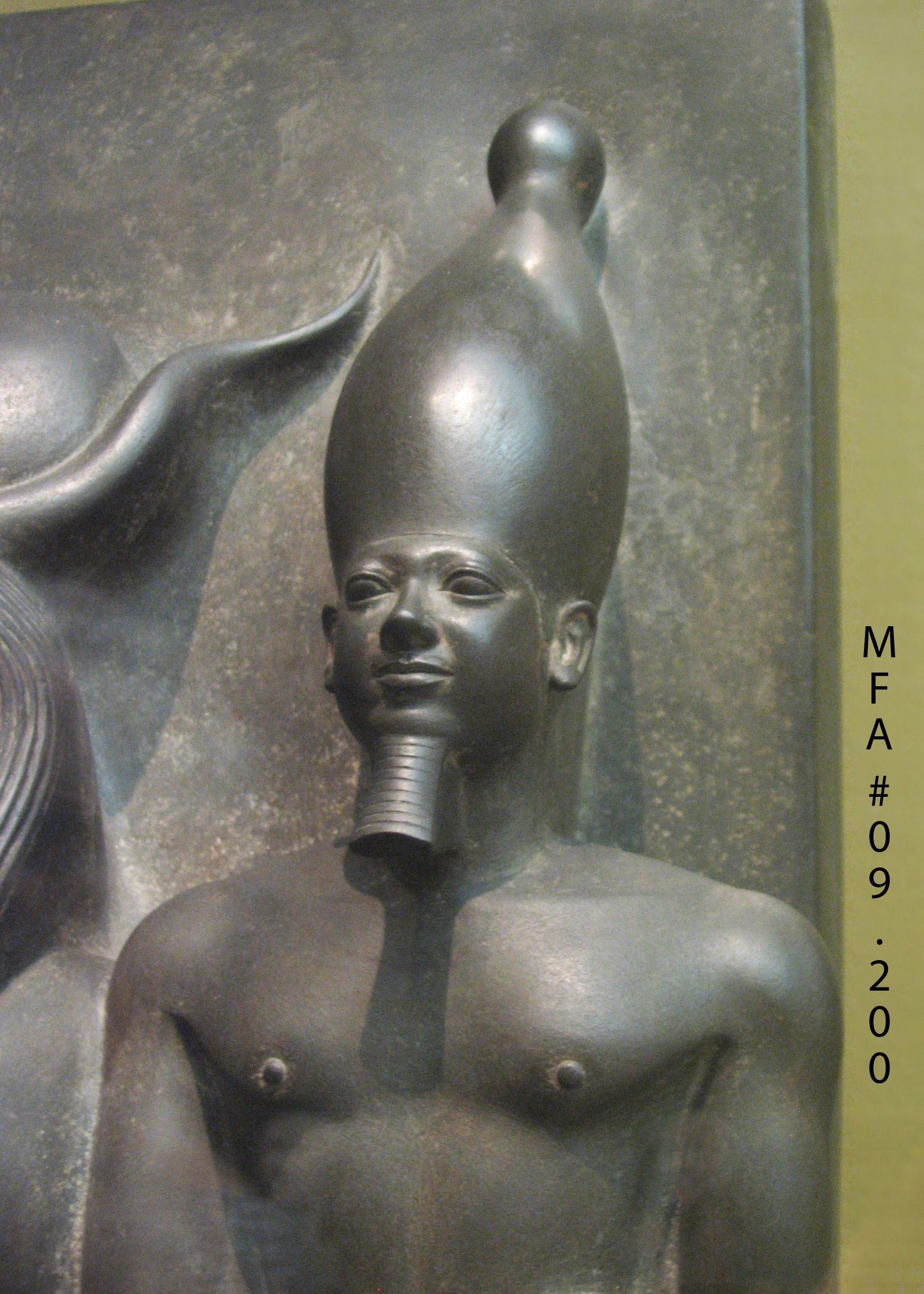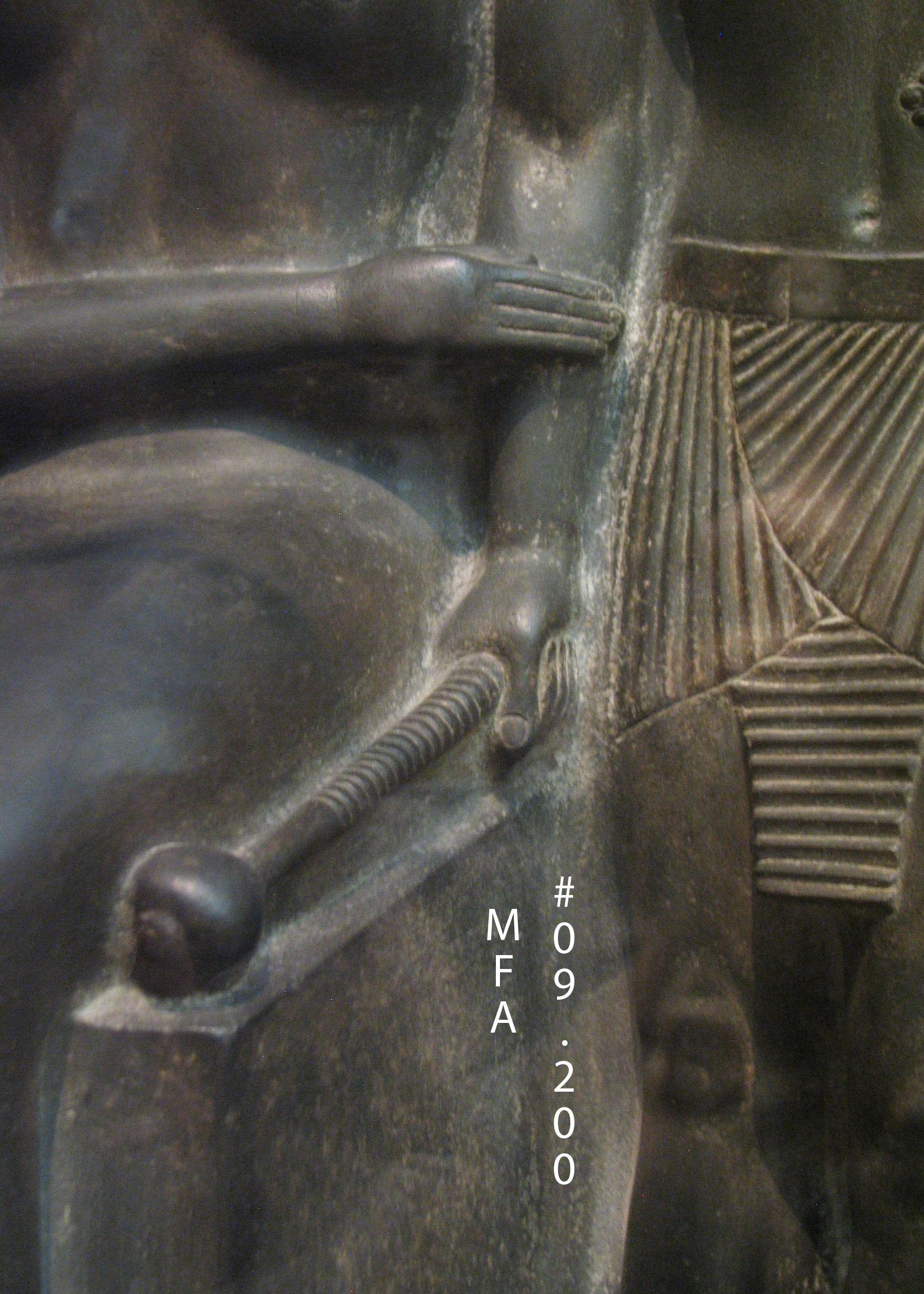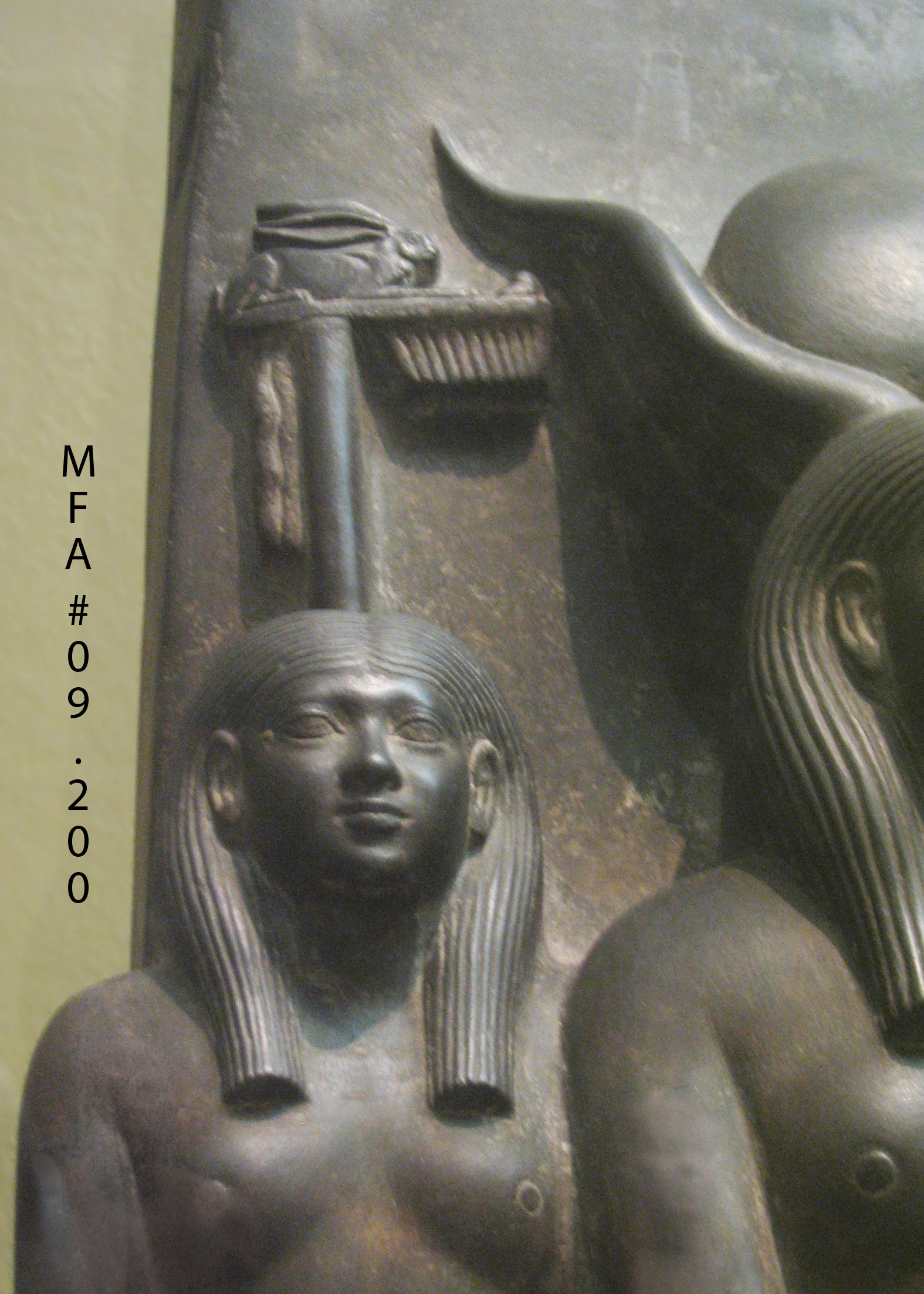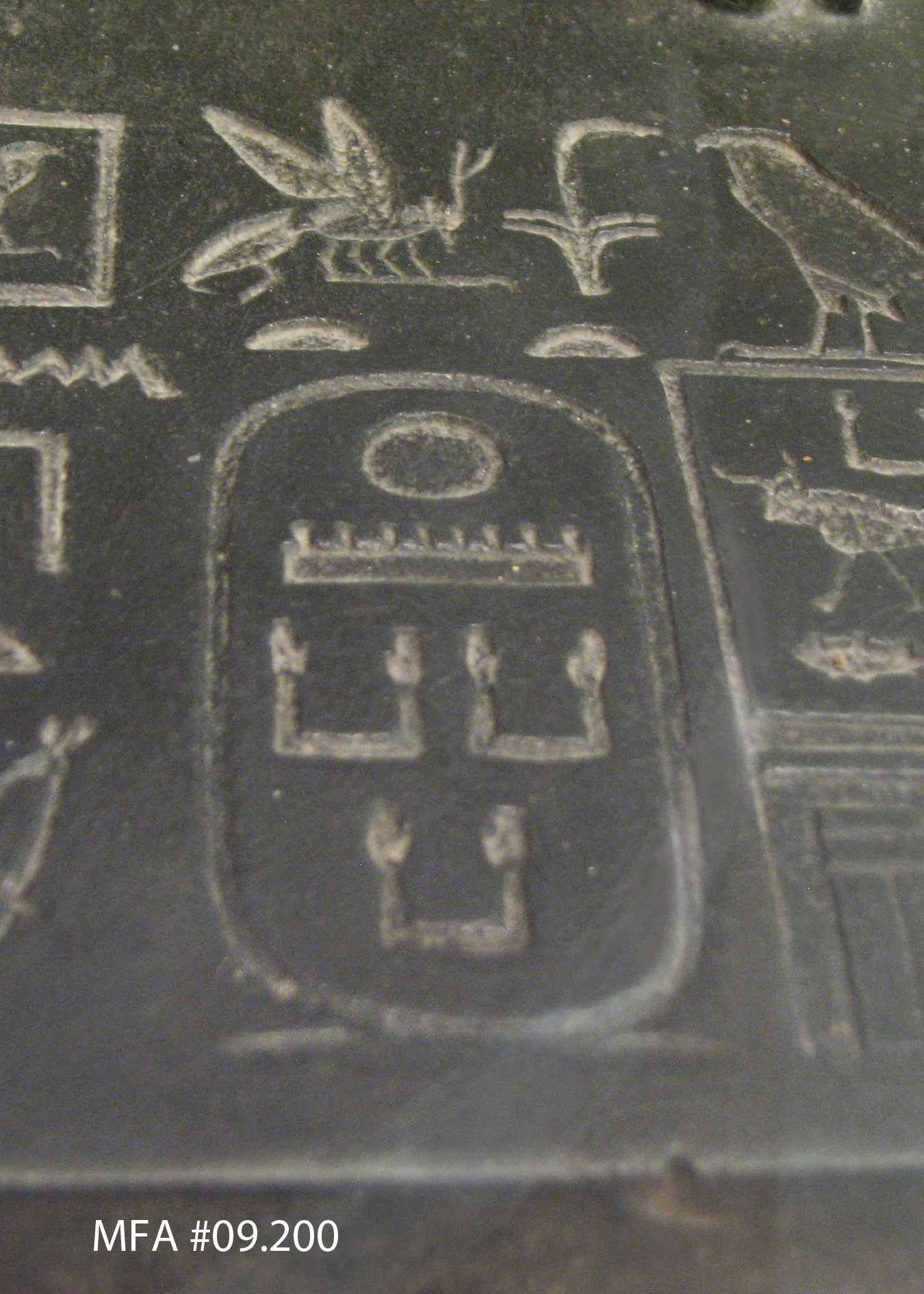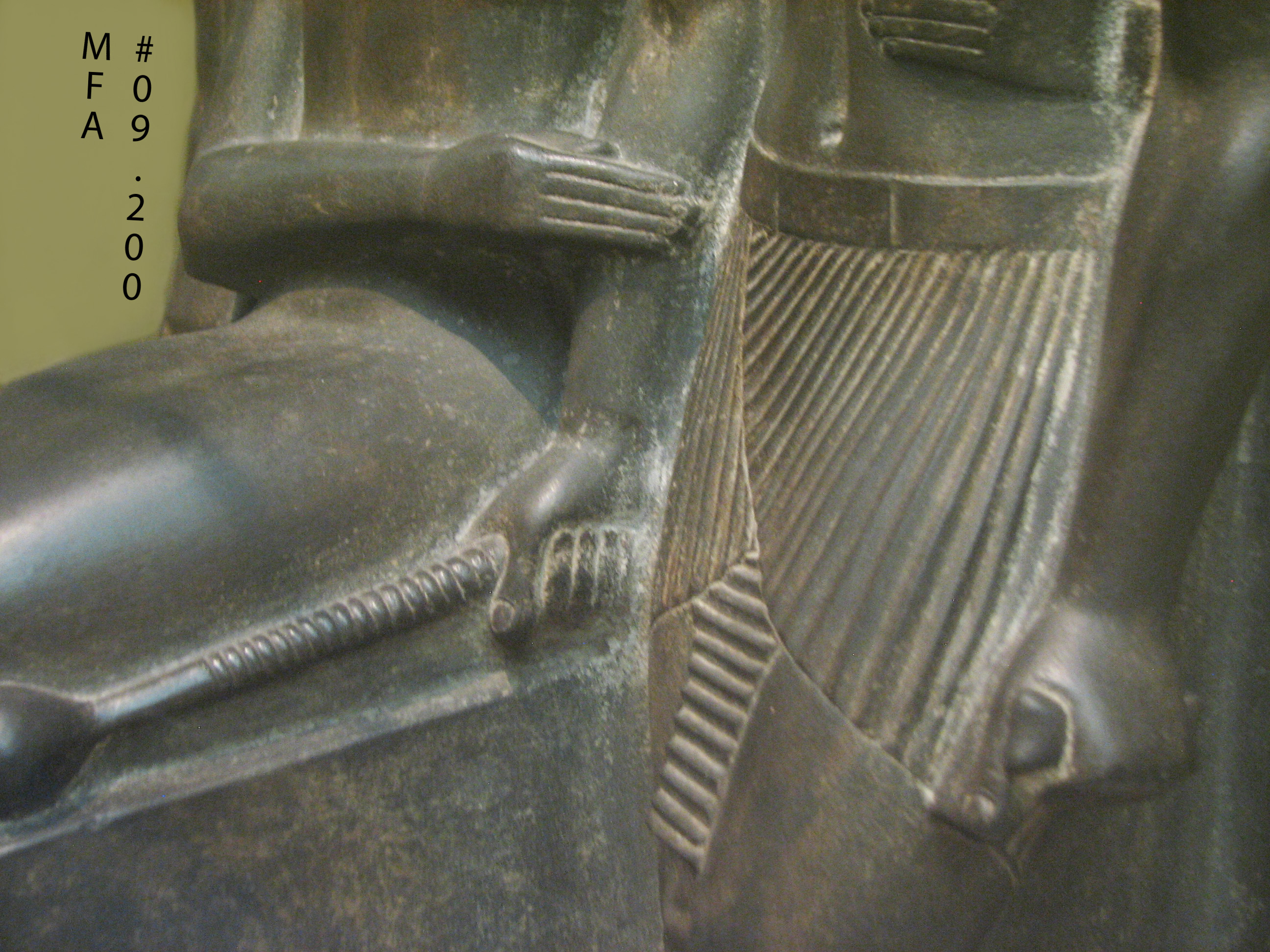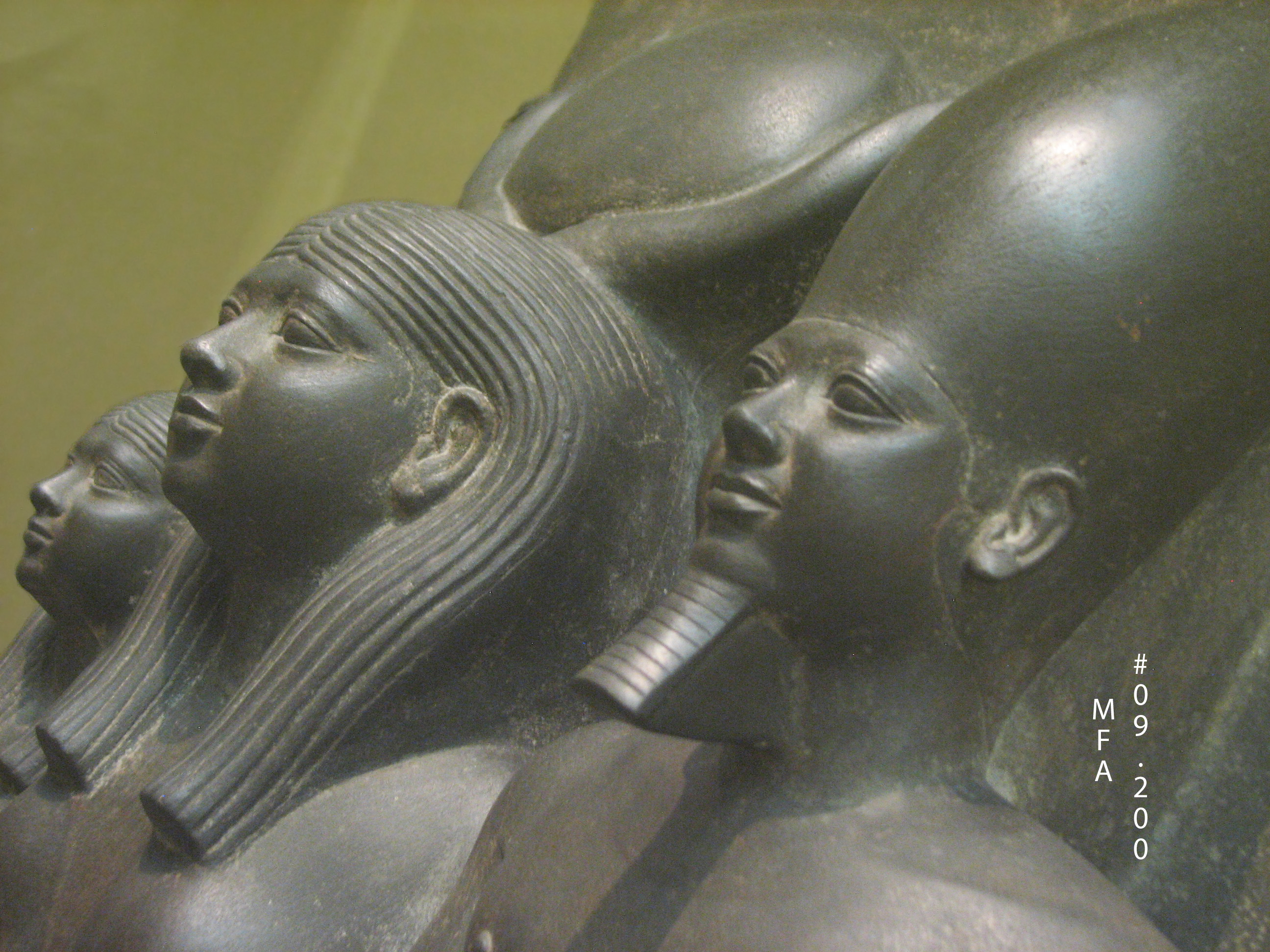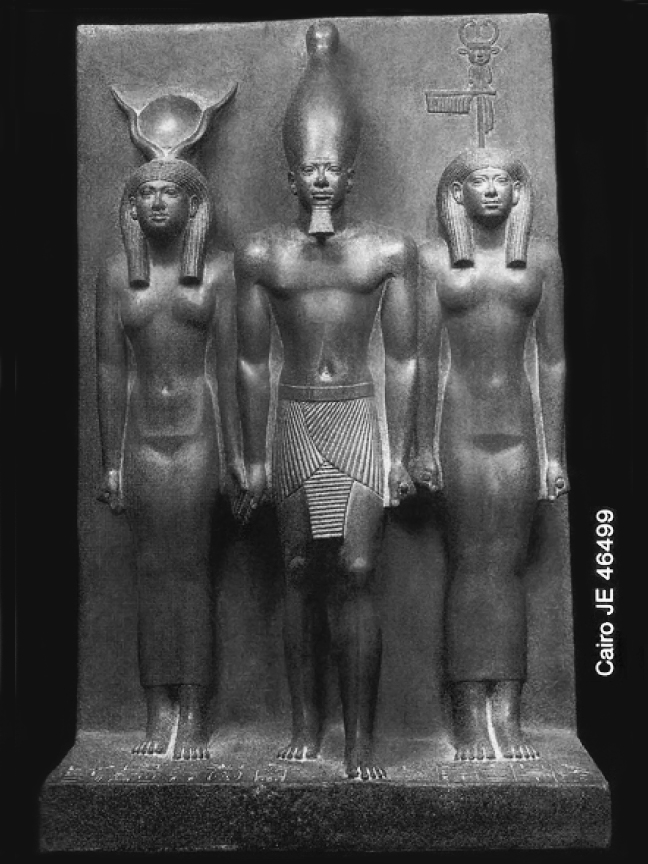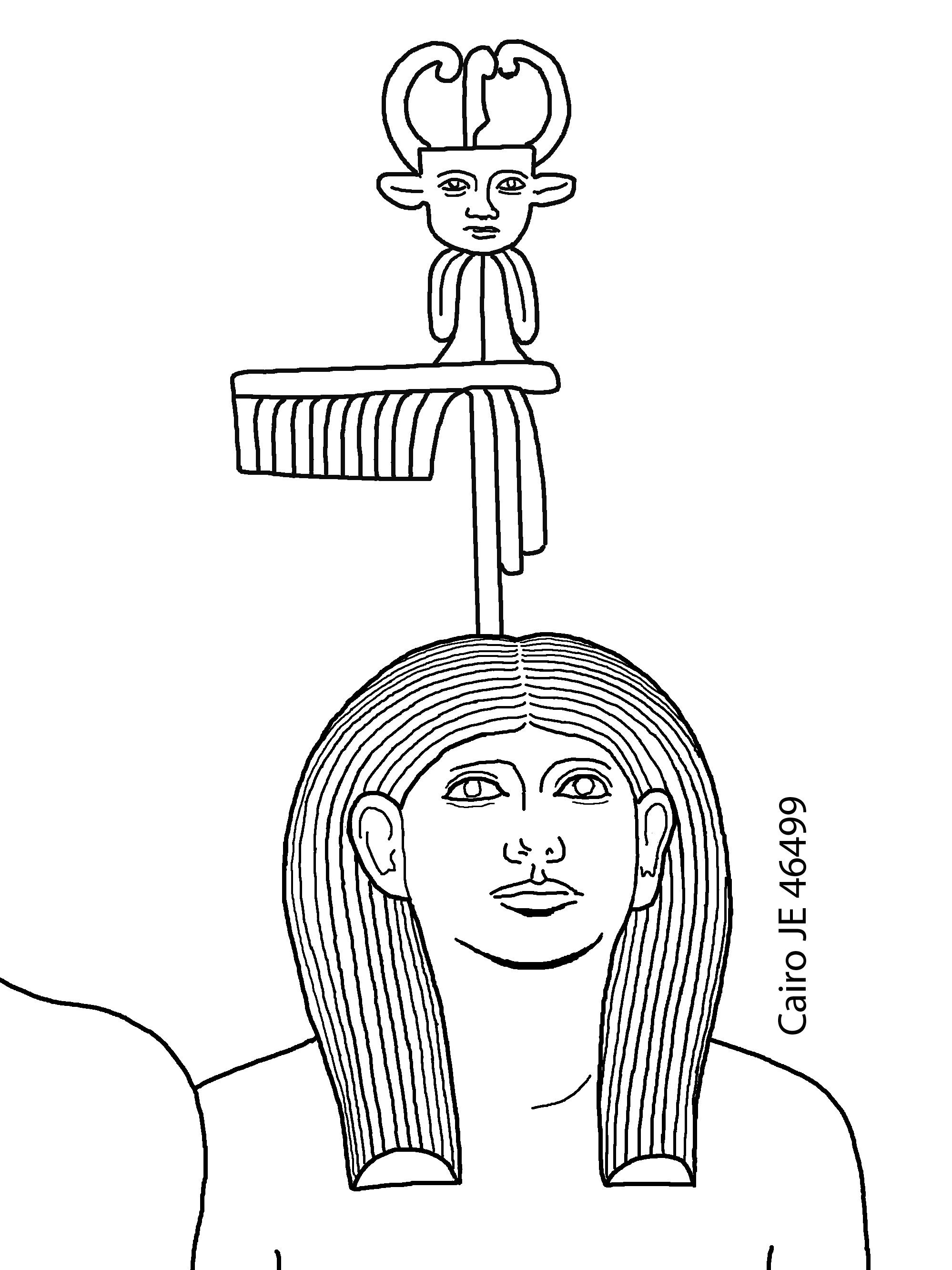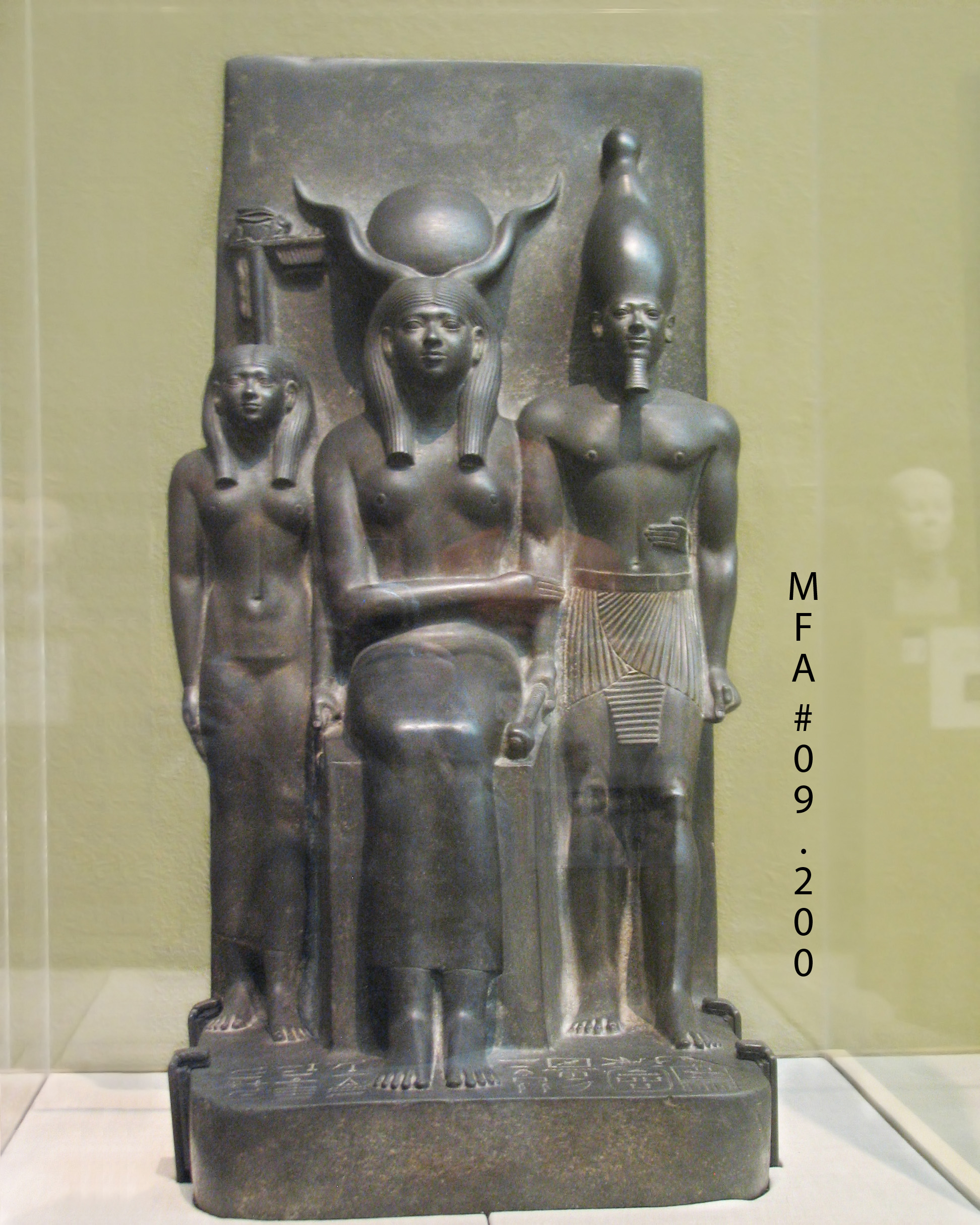
Menkaura with Hathor and Hare Nome Deity
From Giza, Valley Temple of Menkaure, 2490–2472 B.C.E.
Greywacke, W x H x D: 43.5 x 84.5 x 49 cm, (17 1/8 x 33 1/4 x 19 5/16 in.), Weight; 187.8 kg (414.02 lb.)
"More than half a dozen triads were discovered in the ruins of Menkaure's (Mycerinus') Valley Temple. They depict the king, the goddess Hathor (with sun disk and cow's horns), and a minor nome, or province, deity." "Size corresponds to hierarchical position in Egyptian art, and while visually Hathor and Menkaura appear to be the same height, the seated goddess is significantly larger in scale." (From info card and website)
Museum Expedition, MFA #09.200
Photo ©Joan Ann Lansberry, 2014

"Menkaura, beloved of Hathor, Mistress of the Sycamore"
From museum photo
Menkaure features in several similar triad statues. "It was first thought that there must have been about forty triads--one group for each Egyptian nome. Now it is supposed there were eight triads in all, symbolizing the principal sites where the goddess Hathor was worshipped." (_Egyptian Art in the Age of the Pyramids_, (Metropolitan Museum of Art 1999), page 273)
